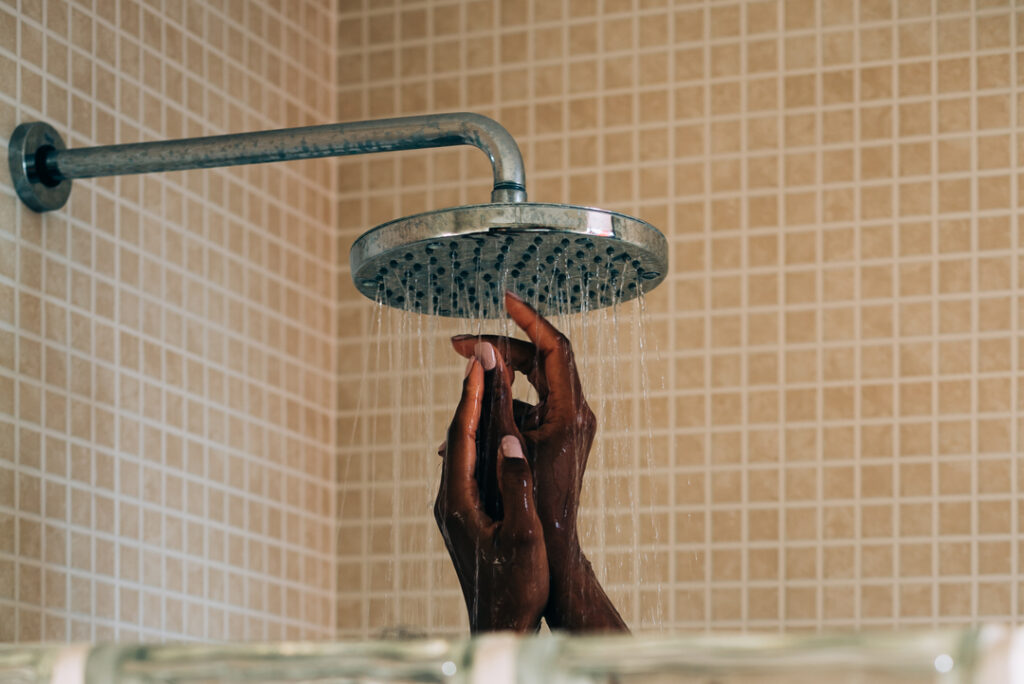In an era where water conservation is becoming increasingly crucial, low-flow shower heads have emerged as a key player in the battle to reduce household water consumption. These innovative devices promise to deliver a satisfying shower experience while significantly cutting down on water usage. But what exactly is the science behind these water-saving wonders, and how do they manage to maintain efficiency without compromising on performance?
Understanding Flow Rate
At the heart of low-flow showerhead technology is the concept of flow rate. Flow rate is typically measured in gallons per minute (GPM) or liters per minute (L/min). Traditional shower heads often have a flow rate of 2.5 GPM or more. In contrast, low-flow shower heads, such as the MineralStream High Pressure 9-Mode Luxury Shower Head, are designed to operate at 1.8 GPM or less, representing a significant reduction in water usage.
The science behind reducing flow rate while maintaining shower quality involves several key principles of fluid dynamics and engineering.
Pressure Compensation Technology
One of the primary challenges in designing effective low-flow shower heads is maintaining adequate water pressure. To address this, manufacturers employ pressure compensation technology. This involves the use of flow regulators or compensators within the shower head that adjust the size of the water pathway based on the incoming water pressure.
When water pressure is high, these regulators narrow the pathway, restricting flow. Conversely, when pressure is low, they widen the pathway to allow more water through. This dynamic adjustment ensures a consistent flow rate regardless of variations in water pressure, providing a steady and satisfying shower experience.
Aerating Technology
Another scientific principle utilized in low-flow shower heads is aeration. This process involves mixing air with the water stream to create the illusion of higher water volume and pressure. The science behind aeration is based on the Bernoulli principle, which states that an increase in the speed of a fluid occurs simultaneously with a decrease in pressure or a decrease in the fluid’s potential energy.
In practice, aerating shower heads draw in air through small inlet ports and mix it with the water stream. This creates a misty, champagne-like spray that feels voluminous and satisfying despite using less water. The air bubbles in the water stream also help to maintain heat, potentially reducing energy consumption for water heating.
Spray Pattern Optimization
The design of the spray pattern is another area where science plays a crucial role in low-flow shower head efficiency. Engineers use advanced computational fluid dynamics models to optimize the size, shape, and arrangement of nozzles to create the most effective spray patterns.
Some low-flow shower heads, like the MineralStream Mineral Chakra, employ multiple spray modes that allow users to customize their shower experience. These modes are carefully designed to maximize the perceived water flow while minimizing actual water usage. For example, a pulsating mode can provide a massaging effect that feels powerful despite using less water than a continuous stream.
Materials Science and Nozzle Design
The materials used in low-flow shower heads also contribute to their efficiency. Many modern designs use materials like silicone for the nozzles, which resist mineral buildup and maintain consistent performance over time. The flexibility of silicone nozzles also allows for easy cleaning, ensuring that the shower head continues to operate at peak efficiency.
The shape and size of the nozzles themselves are crucial in determining the shower head’s performance. Some designs use specially shaped nozzles that create turbulence in the water flow, breaking it up into smaller droplets that provide better coverage and rinsing efficiency.
Water Filtration Integration
Some advanced low-flow shower heads, such as the MineralStream MineralStream Black, incorporate water filtration systems. While primarily designed to improve water quality, these filtration systems can also contribute to the shower head’s efficiency. By removing impurities and mineral deposits, filtration can help maintain consistent flow rates and prevent clogging of nozzles, ensuring long-term performance.
Thermodynamics and Energy Efficiency
The science of low-flow shower heads extends beyond water conservation to energy efficiency. By reducing the volume of water used, these shower heads also decrease the amount of energy required to heat the water. This is based on the simple thermodynamic principle that less water requires less energy to heat.
Moreover, some low-flow shower heads are designed with heat retention in mind. By minimizing the surface area of water exposed to air and using materials with low thermal conductivity, these shower heads can help maintain water temperature more effectively, potentially leading to shorter shower times and further energy savings.
Conclusion: The Future of Shower Technology
The science behind low-flow shower heads demonstrates how principles of physics, fluid dynamics, and materials science can be applied to create more sustainable household fixtures. As water scarcity becomes an increasingly pressing global issue, we can expect to see further innovations in this field.
Future developments may include smart shower heads that adapt to individual user preferences and water conditions in real-time, or systems that integrate with home water recycling systems for even greater efficiency. Whatever the future holds, it’s clear that the humble shower head has become a sophisticated piece of technology, playing a crucial role in water conservation efforts.
By understanding the science behind low-flow shower heads, consumers can make informed choices about their bathroom fixtures, contributing to water conservation efforts without sacrificing the quality of their daily shower experience. As technology continues to advance, we can look forward to even more efficient and enjoyable showering solutions that help us use our planet’s precious water resources more wisely.


